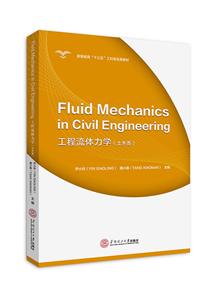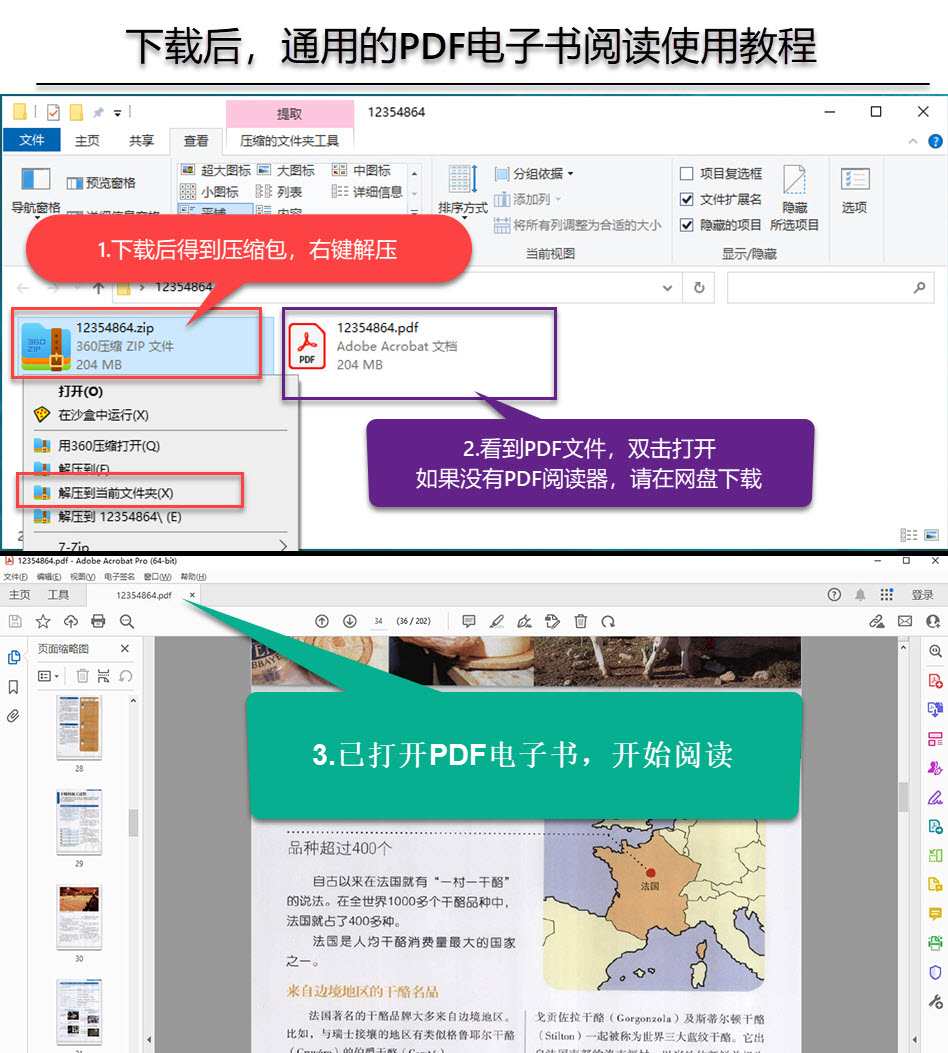工程流体力学:土木类
内容简介
[
本教材是针对近年国内全英教学积极开展,以及本校卓越全英班不断增加的形势而完成的一本基础力学教材,可用于土木相关专业本科流体力学课程全英教学,也作为市政、环境、水利等专业流体力学(水力学)全英或双语课程教学用书。本书根据全国土木工程专业指导委员会确定的教学大纲编写,内容包括基本理论和工程应用两大部分。基本理论部分包括绪论、水静力学、水动力学、流动阻力和水头损失;工程应用部分包括孔口、管嘴恒定出流,长、短管水力计算,支状、环状管网水力计算,恒定明渠流,堰、闸出流及渗流。全书共七章,每章均附本章小结、概念选择题和计算习题,其中计算习题附有答案。
]
目录
Chapter 1 Introduction1.1 What is about hydraulics?1.2 Fluids and their properties1.2. 1The basic characteristic of fluid1.2. 2International system of units (SI) and engineering units1.2. 3The main physical properties of liquids1.3 Forces acting on the fluid1.3.1 Surface force1.3.2 Body forceMultiple-choice questions (one option)ProblemsChapter 2 Hydrostatics2.1 Concept of hydrostatic pressure2.1.1 Definition of hydrostatic pressure2.1.2 Features of hydrostatic pressure2.2 Hydrostatic differential equation and isobaric surface2.2.1 Differential equation of fluid in equilibrium2.2.2 Isobaric surface2.3 Distribution of hydrostatic pressure under gravity2.3.1 Basic formula of hydrostatic pressure under gravity2.3.2 Absolute, relative and vacuum pressures2.3.3 Energy significance and geometric meaning of the basic hydrostatic pressure equation2.4 The application of hydrostatics in measurement2.4.1 Piezometer2.4.2 Differential gauge2.5 Total hydrostatic force acting on a plane surface2.5.1 Graphic method2.5.2 Analytical method2.6 Total hydrostatic forces acting on curved surfaces2.6.1 Magnitude of total hydrostatic force on a curved surface2.6.2 Direction of total hydrostatic force2.6.3 Acting point of total hydrostatic force2.7 Total hydrostatic force on a body, buoyancy, stability of a floating body2.7.1 Total hydrostatic force acting on a body ——Archimedes principle2.7.2 Equilibrium of a sinking body, submerged body and floating bodyChapter summaryMultiple-choice questions (one option)ProblemsChapter 3 Basic equations of steady total flow3.1 Two methods for describing motion of fluid3.1.1 Lagrangian method and Eulerian method3.1.2 Acceleration of particle: local, convective and total acceleration3.1.3 Some basic concepts of fluid movement3.2 Continuity equation of steady total flow3.3 Energy equation of steady total flow3.3.1 Energy equation of steady streamtube flow of ideal fluid3.3.2 Energy equation of steady streamtube flow of real fluid3.3.3 Energy equation of steady total flow of real fluid3.4 Momentum equation of steady total flow3.4.1 Derivation of the momentum equation3.4.2 Conditions and tips in the application of the momentum equation3.4.3 Application examples of the momentum equation3.4.4 Similarities and differences between the momentum equation and energy equationChapter summaryMultiple-choice questions (one option)ProblemsChapter 4 Types of flow and head loss4.1 The classification of flow resistance and head loss4.1.1 The classification of flow resistance4.1.2 The classification of head losses4.1.3 The superposition principle of head losses4.2 Two regimes of real fluid flow4.2.1 Reynolds’ experiment4.2.2 The identification of laminar and turbulent flows4.2.3 The physical meaning of Reynolds number4.3 The relationship between frictional head loss and shear stress of uniform flow4.3.1 The relationship between frictional head loss and wall shear stress4.3.2 The relationship between frictional head loss and shear stress4.3.3 The general calculation formula for frictional head loss4.4 Laminar flow in circular pipes4.4.1 The velocity distribution of laminar flow4.4.2 The mean flow velocity of laminar flow4.4.3 The flow rate of laminar flow4.4.4 The frictional head loss of laminar flow4.4.5 The kinetic correction coefficient of laminar flow4.5 The basic concepts of turbulent flow4.5.1 Developing process of turbulent flow4.5.2 Fluctuation and time averaged motion of turbulent flow4.5.3 The shear stress and Prandtl’s theory of turbulent flow4.5.4 The viscous sublayer and flow zone of turbulent flow4.5.5 The velocity distribution of turbulent flow4.6 Frictional head losses of turbulent flow4.6.1 Experiment of frictional resistance coefficient4.6.2 Frictional resistance coefficient of commercial pipes4.6.3 Empirical formulae for frictional head loss4.7 Local head loss4.7.1 Local head loss of sudden expansion of pipe4.7.2 Local head loss coefficient4.8 Basic concepts of boundary layer and flow resistance around an object4.8.1 Basic concept of boundary layer4.8.2 Separation of boundary layer and flow resistanceChapter summaryMultiple-choice questions (one option)ProblemsChapter 5 Steady orifice, nozzle and pipe flow5.1 Introduction5.2 Basic formulae for steady flow through orifice and nozzle5.2.1 Steady flow through thin-wall orifice5.2.2 Steady flow through nozzle5.3 Steady flow in pressurized pipes5.3.1 Hydraulic calculation of hydraulically short pipes5.3.2 Hydraulic calculation of hydraulically long pipes5.3.3 Hydraulic calculation for pipeline networksChapter summaryReview questionsMultiple-choice questions (one option)ProblemsChapter 6 Steady flow in an open channel6.1 Geometry of open channel6.1.1 Longitudinal bed slope of open channel6.1.2 Cross-section of open channel6.1.3 Geometrical parameters of flow cross-section6.1.4 Prismatic and non-prismatic channel6.2 Uniform flow in open channel6.2.1 Characteristics and conditions of uniform open-channel flow6.2.2 Basic equations for uniform open-channel flow6.2.3 Hydraulic calculation of uniform open-channel flow6.2.4 The optimum hydraulic cross-section6.3 Steady non-uniform open-channel flow6.3.1 Flow regime of open-channel flow6.3.2 Specific energy6.3.3 Critical depth6.3.4 Critical bed slope6.3.5 Hydraulic jump and hydraulic drop6.3.6 Surface profile of gradually varied flow in prismatic open channel6.3.7 Computation of surface profiles in steady gradually varied flow…6.4 Weir flow and underflow of sluice gates6.4.1 Types and basic formula of weir flow6.4.2 Fundamental formula of underflow of a sluice gateChapter summaryMultiple-choice questions (one option)ProblemsChapter 7 Seepage flow7.1 The phenomenon of seepage and the seepage model7.1.1 Seepage phenomenon7.1.2 State of water in soil7.1.3 The characteristics of soil seepage7.1.4 Seepage models7.2 The basic law of seepage flow7.2.1 Darcy’s Law7.2.2 The limitations of Darcy’s law7.2.3 The coefficient of permeability7.3 Dupuit’s formula of steady gradually varied seepage flow7.3.1 The velocity distribution in steady uniform and non-uniform seepage flows7.3.2 The basic differential equation and the seepage curve of steady gradually varied seepage flow7.4 Seepage calculation of wells and catchment corridors7.4.1 Catchment corridors7.4.2 Fully penetrating open wells7.4.3 Fully penetrating artesian wells7.4.4 The drainage of large-diameter well and foundation ditch7.4.5 Well group7.5 Graphical solution by drawing flow net7.5.1 Drawing of flow net for the planar confined seepage7.5.2 Seepage calculation by flow netChapter summaryReview questionsMultiple-choice questions ( one option)ProblemsAnswers to selected problemsReferences
封面

书名:工程流体力学:土木类
作者:尹小玲,唐小南主编
页数:317页
定价:¥74.0
出版社:华南理工大学出版社
出版日期:2017-12-01
ISBN:9787562354741
PDF电子书大小:133MB 高清扫描完整版
本文标题:《工程流体力学:土木类》PDF下载
资源仅供学习参考,禁止用于商业用途,请在下载后24小时内删除!

